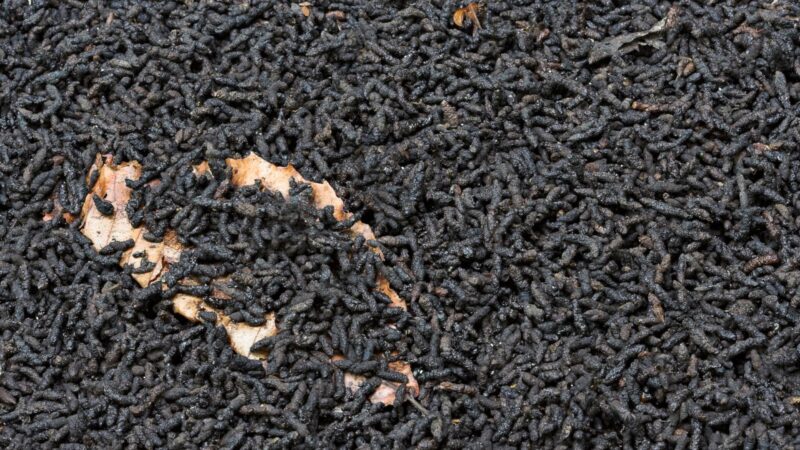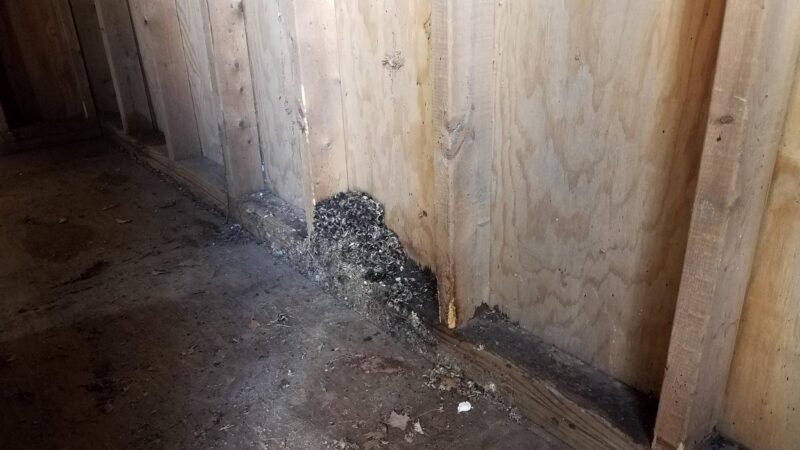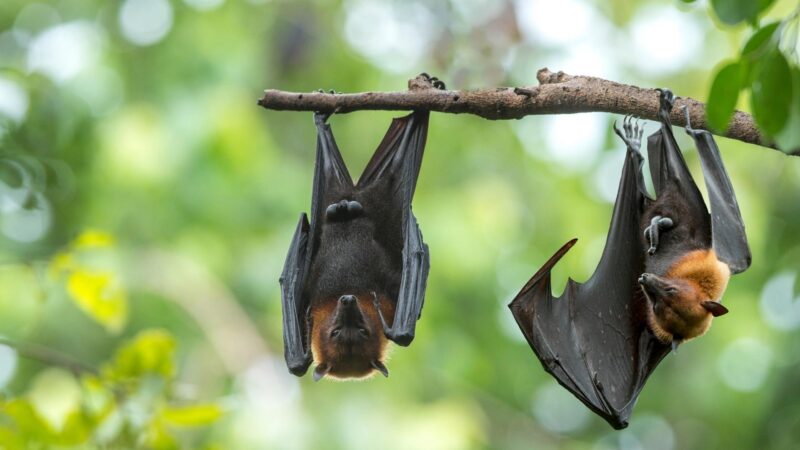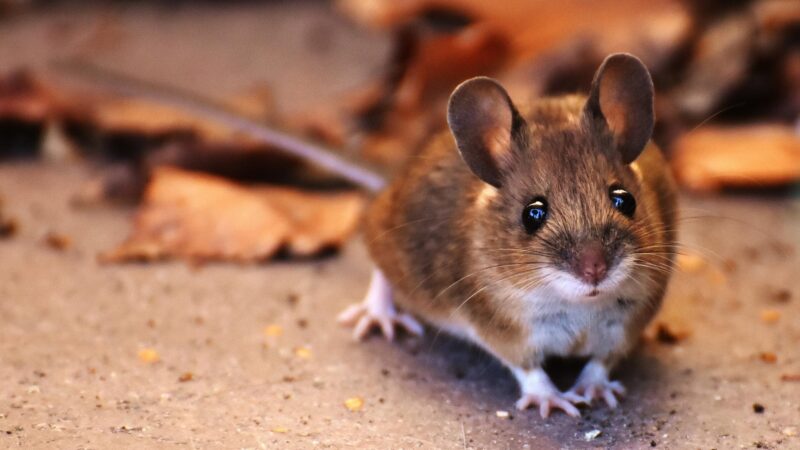Without a doubt, bats and mice can be nuisances indoors and can also bring danger to our health. Obviously, you don’t want to wake up one morning smelling their poop and pee.
But before taking any action, you also want to make sure if the smell is from bat poop or mouse poop. This is when the challenges start.
What is the main difference between bat poop and mouse poop? Bat poop is often mistaken for mouse poop since they almost have the same size and shapes, and sometimes, the same color. Hence, their main difference is that bat droppings are softer than mouse droppings because of the food they eat.
Also called guano, bat poop is known to be an effective organic fertilizer since bats are insectivores. On the other hand, mice are omnivorous, and their poop is very unlikely to be used as compost.
If you want to know everything about bat droppings and mouse droppings and how to deal with them, this article is for you.
Table of Contents
House Bat Droppings Identification

House bat droppings are usually black, 1/8 to 1/4 long, and are about the size of a grain of rice. Most of them are dotted with speckles. These are exoskeleton fragments of insects, which are their main food.
Bat guano in attics are mostly in small quantities only but are scattered everywhere and are very dry.
House Mouse Droppings Identification

Most house mouse droppings are brown, but some can be black or green, depending on what they last eat. But unlike bats, mice poop a lot, which means their droppings are usually accumulated in piles in one place.
If you look at them closer, mouse poop has tapered ends, while bat poop has round or pointy ends.
How Can You Tell Mouse Poop From Bat Poop?
You can identify mouse poop from bat poop by doing the so-called crumble test. Wear protective gloves and roll a piece, then crash it slightly using your thumb and fingers.
Bat droppings will tend to crumble immediately, while mouse droppings are harder to crush. Crushed bat poop also tends to shine in the light.
Is Bat Poop Toxic to Humans?

Bat poop can be toxic to humans once inhaled. However, it does not necessarily mean you cannot remove it by yourself. Under normal conditions, removing bat droppings on attics will not make you sick, as long as you wear proper personal protective equipment (PPE), such as gloves and respirators.
Do Mouse and Bat Droppings Carry Disease?
Mice and bat droppings carry disease, particularly the respiratory disease called Histoplasmosis. This disease is caused by a fungus called Histoplasma, which can grow and live in soils and damp areas.
Accumulated mice and bat droppings emit microscopic spores, which when inhaled can cause this disease.
Hantavirus Pulmonary Syndrome (HPS) is deadly and can be found in the United States. Mild histoplasmosis usually has no symptoms, while severe infection can be fatal.
Nevertheless, this fungus doesn’t survive long in hot, dry locations such as attics. Therefore, removing mice and bat poop in such areas is somehow safe.
Do Bats Poop From Their Mouth?
Bats don’t poop from their mouths. According to an old myth, bats don’t have an anus, so they poop with their mouth. This is definitely not true.
This misbelief came from the fact that bats have fast digestion and cannot digest fiber. Instead, they chew fruits and extract the juice, and later spit out the remains.
Just like other mammals, bats eat food with their mouth and expel their waste through their anus. But because they rest in an upside-down position, bats usually pee only if they are in the upright position.
Otherwise, it would be very messy if their urine would drop to their bodies and faces while hanging in caves.
Do Bats Poop While Flying?
Most bats poop and pee while they are flying. This is why you can also see bat droppings and urine stains on top of cars, car and house windows, rooftops, sides of the buildings, and other surfaces where bats fly through.
Nonetheless, they may also sometimes poop while hanging upside down if they cannot help it.
Where Do Bats Usually Poop?
Bats love to poop wherever they are, especially if they are near their nests. This includes caves, tree cavities, buildings, bridges, barns, attics, porch floors, under eaves, wall spaces, and other similar places.
In short, these fuzzy flyers poop anywhere they like to. When nature calls, bats fire away unless they are asleep.
Can You Smell Rat Poop?

You can smell rat poop just like you do in mouse poop. Rat droppings also have an ammonia-like smell, which goes stronger as they turn dry. But since rats are bigger than mice, they eat more, so they poop more.
Therefore, inhaling rat poop has a higher risk of getting infected by Hantavirus than in mouse poop.
Do Rats Leave Droppings Everywhere?
Rats leave their droppings everywhere, just like mice do. Since they are also part of the rodent family, rats also leave their poop to mark their territory. But unlike mouse poop, rat poop is much bigger and can easily be seen.
Rat droppings also have rounded ends, while mouse poop is tapered on both ends.
How Do You Tell if You Have Mice or Bats?
Aside from doing the crumble test to their droppings, you can also tell if you have mice or rats based on their behaviors. But while both of them are most active at night, bats in houses can be seen flying out from the attic to hunt for food and will return before sunrise. In contrast, mice prefer to stay inside and hide in the dark.
Both mice and bats produce scratching and squeaking sounds while in the attic. But because bats leave at night, mouse sounds are more prevalent than bat sounds during night hours.
You can also hear bats with their fluttering wings as they leave and return to the attic or making some short flights around their nests.
How Do You Clean Bat and Mouse Droppings?
Cleaning bat droppings is almost the same as removing mouse droppings. You should first wear latex, rubber, or vinyl gloves and a mask to avoid inhaling the spores.
You should also ventilate the area and spray it with a bleach solution. But instead of using a vacuum cleaner or a broom, use paper towels to pick them up.
How to Get Rid of Bat Droppings?
Getting rid of bat droppings should start by protecting yourself. As mentioned earlier, bat poop contains Hantavirus that can be inhaled. But again, cleaning an area full of bat feces can still be done safely.
Whether they are on your attic, windows, or on your car roof, here are some safety tips when removing bat poop:
- Prepare cleaning materials, including paper cloths, plastic bags, old newspapers, a bleach solution spray (1 part water and 10 parts bleach), and hydrogen peroxide.
- Wear protective gloves and a mask, especially if the smell is very strong.
- Don’t vacuum or sweep bat guano. Otherwise, they might also break and spread out.
- Spray the bleach solution on the infected area and let it soak for at least 5 minutes.
- Using a paper towel, pick up the bat poop carefully and avoid crushing them.
- Place them inside in sealed plastic bags and dispose of them properly.
- Bat guano is usually accompanied by pee, so you might also want to pour or spray the area with 3% Essential Food Grade Hydrogen Peroxide.
- Since you are likely to remove poop at nights when the bats are not around, place old newspapers below their roosting areas. In case they return, you will find it easier to get their poop.
- Throw away the gloves and wash your hands thoroughly.
How to Get Rid of Mouse Droppings?
Unlike bat droppings, mouse droppings can also be inside your car, cabinets, drawers, and on your carpets, mattresses, or furniture. Therefore, getting rid of them mainly depends on where you saw them.
But in most cases, cleaning mouse poop is more than just removing them. Here are some useful tips:
- Prepare your cleaning materials such as a bleach solution, paper towels, and a plastic bag.
- For mouse poop in cars, you will also need an ozone generator, a vacuum cleaner, and a car air freshener.
- For carpets, fabrics, and mattresses, you will need a carpet cleaner and an enzymatic cleaner.
- Wear proper PPE (personal protective equipment) and place an electric fan near you so that clean air can circulate.
- Since there could also be mouse urine, disinfect the area with a bleach solution and soak it for at least 5-10 minutes.
- Carefully pick up the mouse droppings and place them inside a plastic bag.
- To get rid of the strong smell of mouse pee inside your car, use a reliable ozone generator such as Airthereal MA5000 Commercial Ozone Generator.
- For mattresses, remove all the beddings and wash them with a bleach solution. Sprinkle a reasonable amount of baking soda on the infected area and wait until it turns dry. You may also use 3% Essential Food Grade Hydrogen Peroxide.
How to Get Rid of Bat Infestation?
Bats may accidentally enter your house while searching for food. But once the weather starts to get cold, lots of them may invade your attic to find a warm place where they can hibernate.
Bats can be nuisance pests, but they are also pest controllers. Therefore, here are some safety tips to get rid of a bat infestation.
1. Scare the Bats Away
Before anything else, make sure that the bats have exit points and that there are no flightless baby bats (also called pups). Then, turn on the lights in their hiding areas. You may also create some noise such as loud music or banging of metals. Alternatively, place some bat repellents such as Bonide Repellent Bat Magic.
2. Ignore Them
In many cases, bats are not becoming nuisances, and all they only need is shelter during winter. They also usually leave at night to hunt for flying insects. Bats may pose health risks, but they are unlikely to attack humans.
So, if they are not causing harm or trouble, simply ignore them, and they will leave by themselves.
3. Bat-Proof Your House
Bat-proofing your house means doing everything to prevent bats from entering. This includes sealing all possible entries, turning on the lights in the attic, etc.
The best time to do preventive measures is in the early spring (or March) since this is when bats are leaving houses. They may come back in November, though.
4. Provide Bat Houses
Bats can be very persistent and will enter your home no matter what you do. Aside from that, exclusion can be very stressful for pregnant bats. So, instead of driving them away, you can provide them with artificial houses. There are several designs of bat houses. If you have no time to make one, buy Kenley Bat House.
Related: How to Tell if You Have Bats in Your Attic? | A Detailed Guide
How to Deal With Mice Infestation?
Having a mice infestation inside your house is not only a creepy experience but also poses health risks. Poop from house mice is not known to be a carrier of Hantavirus. However, mice can contaminate your food and damage your clothes. So, if you have tons of mice at home, here are some things you can do:
1. Remove Clutter and Inspect
Mice are very only good at hiding and climbing. Remove all the clutter, especially in attics, cars, and other hidden areas. To help locate their nests, trace where the smell of mouse poop and pee is coming from. Dried mice urine typically has invisible stains, so use UV light such as UV Stain Detective LED Blacklight.
2. Trap Them
Sticky traps are considered inhumane since trapped mice will die slowly in pain. Instead, use snap traps with irresistible bait such as Tomcat Press ‘N Set Mouse Traps, which kill mice instantly. But if you prefer catching them alive, use pet-safe live mouse traps such as Catcha 2 Piece Humane Smart Mouse Trap.
3. Sanitize Your Home
Sanitizing your home means removing all the possible sources where mice can hide and survive in huge numbers and proper storing of food. This can be done by checking all their potential points of entry and sealing them. Nevertheless, sanitation can only be successful if there are no more mice inside your house.
Summary
Bats are somehow protected by law, and it is illegal to kill some of their species. On the other hand, mice are house pests, but it does not mean you can kill them in any way you want. Getting rid of them is very hard if you don’t understand their diet and behavior. This is also why you should know how to identify their poop.